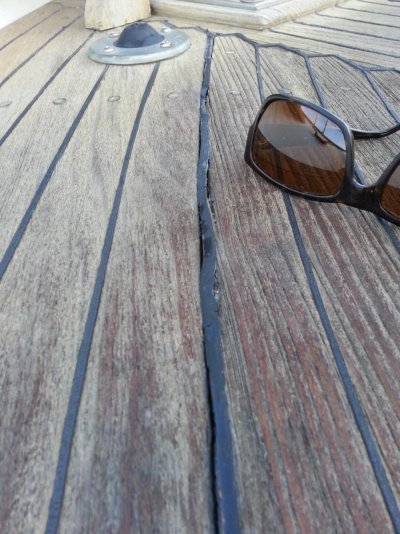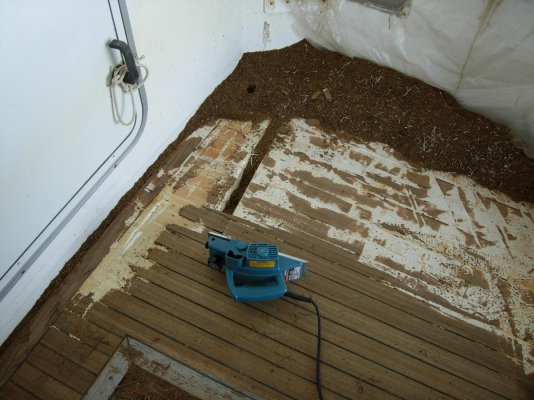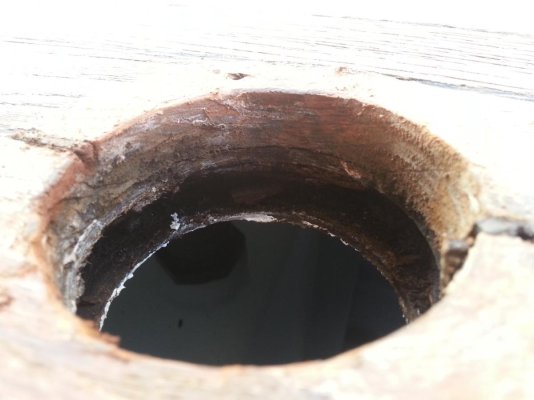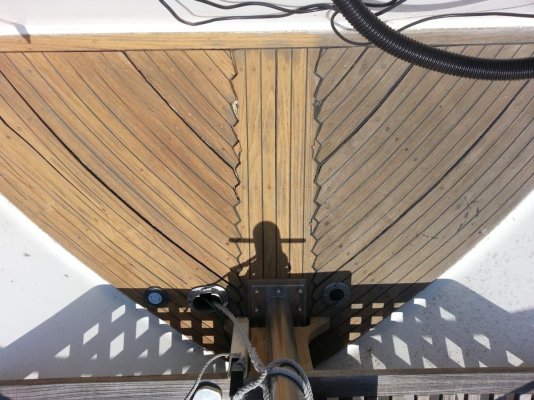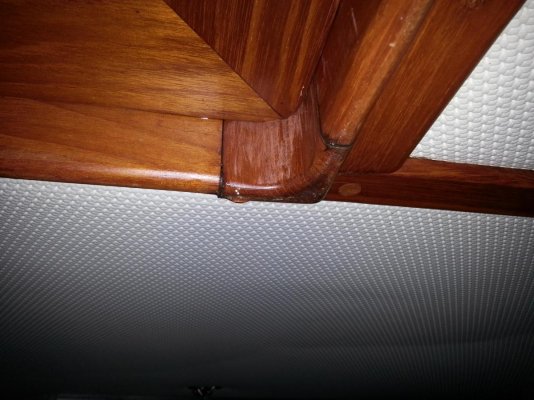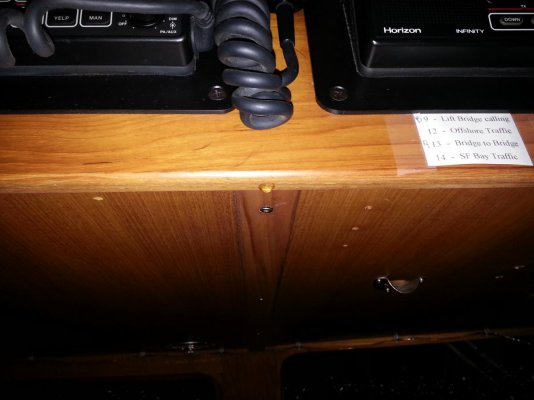CarlinLA
Senior Member
Ok...
Let's chase teak deck leaks...
The playing field... a well kept and clean 1985 Fu Hwa "Golden Star" sedan trawler - with the oversize flybridge.
Having only had the vessel for a few months I am still learning about the boat. In general terms - it is in very good condition... but it does have a "soft spot" in at least one spot on the flybridge (near the ladder).
Recent observations in the lazarette imply that water is getting into the cockpit deck.
So this exercise will be to stop as many of these obvious leaks until a longer term solution (and core repairs) can be implemented - and that could be forever - a non-leaking teak deck is good enough for me.
To start - lets look to the obvious... pretty big gaps in the calk between the boards up on the foredeck...
Thankfully the previous owner provided quality tools to use in clearing out the old failed caulk - that will be a big help.
More to follow on the repairs...
Let's chase teak deck leaks...
The playing field... a well kept and clean 1985 Fu Hwa "Golden Star" sedan trawler - with the oversize flybridge.
Having only had the vessel for a few months I am still learning about the boat. In general terms - it is in very good condition... but it does have a "soft spot" in at least one spot on the flybridge (near the ladder).
Recent observations in the lazarette imply that water is getting into the cockpit deck.
So this exercise will be to stop as many of these obvious leaks until a longer term solution (and core repairs) can be implemented - and that could be forever - a non-leaking teak deck is good enough for me.
To start - lets look to the obvious... pretty big gaps in the calk between the boards up on the foredeck...
Thankfully the previous owner provided quality tools to use in clearing out the old failed caulk - that will be a big help.
More to follow on the repairs...


